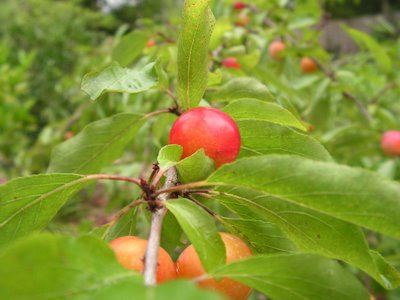 One of the recommended roses from the Central Florida Rose Society, this 'Cecil Brunner' took a long time to come to bloom, but even in the heat of late July, its blooms are winning. The descriptions of this rose (apparently a climbing sport of a cross between a Tea and a Polyantha) are so varied and contradictory as to make one suspect that there are many different roses sold under the same name.
One of the recommended roses from the Central Florida Rose Society, this 'Cecil Brunner' took a long time to come to bloom, but even in the heat of late July, its blooms are winning. The descriptions of this rose (apparently a climbing sport of a cross between a Tea and a Polyantha) are so varied and contradictory as to make one suspect that there are many different roses sold under the same name.My bush, in any case, has quickly hit eight feet from a cutting I planted in December from Seminole Springs, and finally put out its first small flush of blooms, each absolutely perfect and double, though not deeply. It starts out a nice blush-pink, more intense in the center. Very quickly it picks up a yellow tint, and by the time its completely blown, is distinctly yellow. No one notes this shift in color, which likely means that its just Florida weather affecting the blooms. Many flowers here react to the intensity of the sun and heat unlike they do elsewhere. The scent is, well, a bit odd -- not at all rosey, more spicey, almost a curry. But not unpleasant.
An update: It happens. Sometimes tags get switched at the nursery. I'm convinced, after a bit of research and reflection, that the rose that I bought labeled 'Cecile Brunner' is, in fact, 'Céline Forestier': The blooms are too large (this time of the year) for Cecile (which are nearly miniature), they're too yellow, and they're clearly quartered and deeply cupped. Plus, there's the spicy tea-rose fragrance.
It simply cannot by Cecile, and looking on Seminole Springs' website, the only rose that fits the profile is Celine. I'm not unhappy with the error, as today, in the doldrums, I have a dozen roses in bud, waving madly in the afternoon breezes.




